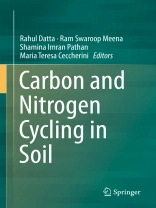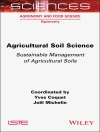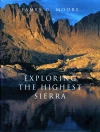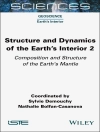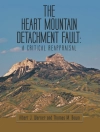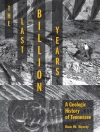Several textbooks and edited volumes are currently available on general soil fertility but‚ to date‚ none have been dedicated to the study of “Sustainable Carbon and Nitrogen Cycling in Soil.” Yet this aspect is extremely important, considering the fact that the soil, as the ‘epidermis of the Earth’ (geodermis)‚ is a major component of the terrestrial biosphere. This book addresses virtually every aspect of C and N cycling, including: general concepts on the diversity of microorganisms and management practices for soil, the function of soil’s structure-function-ecosystem, the evolving role of C and N, cutting-edge methods used in soil microbial ecological studies, rhizosphere microflora, the role of organic matter (OM) in agricultural productivity, C and N transformation in soil, biological nitrogen fixation (BNF) and its genetics, plant-growth-promoting rhizobacteria (PGPRs), PGPRs and their role in sustainable agriculture, organic agriculture, etc. The book’s main objectivesare: (1) to explain in detail the role of C and N cycling in sustaining agricultural productivity and its importance to sustainable soil management; (2) to show readers how to restore soil health with C and N; and (3) to help them understand the matching of C and N cycling rules from a climatic perspective.
Given its scope, the book offers a valuable resource for educators, researchers, and policymakers, as well as undergraduate and graduate students of soil science, soil microbiology, agronomy, ecology, and the environmental sciences. Gathering cutting-edge contributions from internationally respected researchers, it offers authoritative content on a broad range of topics, which is supplemented by a wealth of data, tables, figures, and photographs. Moreover, it provides a roadmap for sustainable approaches to food and nutritional security, and to soil sustainability in agricultural systems, based on C and N cycling in soil systems.
Innehållsförteckning
– Carbon and Nitrogen Cycling in Agroecosystems: An Overview. – Rhizosphere as Hotspot for Plant-Soil-Microbe Interaction. – Biochar and Organic Amendments for Sustainable Soil Carbon and Soil Health. – Arbuscular Mycorrhizal Fungi and Nutrient Cycling in Cropping Systems. – Using Traditional and Simulation Methods for C and N Cycling Studies with Additional Periods of Human Civilisation: Replicating the Procedures at Regional Levels Advocate. – Small Farmers and Sustainable N and P Management: Implications and Potential Under Changing Climate. – Metal Toxicity and Nitrogen Metabolism in Plants: An Overview. – Soil Microbial Ecology and Its Role in Soil Carbon Sequestration in Sustainable Agroecosystems Under Climate Change. – Sustainable C and N Management Under Metal-Contaminated Soils. – Legumes for Carbon and Nitrogen Cycling: An Organic Approach. – Nitrogen-Cycling Communities in Organically Amended Versus Conventionally Managed Agricultural Soil. – Significance of the Enzymes Associated with Soil C and N Transformation. – Factors Affecting Soil Microbial Processes. – Carbon and Nitrogen Mineralization Dynamics: A Perspective in Rice-Wheat Cropping System.
Om författaren
Rahul Datta is a soil microbiologist and enzymologist. Dr. Datta holds an MSc and Ph D from the Department of Geology and Pedology at Mendel University in Brno, Czech Republic, where he is currently a researcher. He has acquired global experience in soil science research by working with a number of prominent experts, including as a visiting scientist with both Dr. Richard Dick (President of the SSSA) at OSU, Ohio, USA, and Prof. Paolo Nannipieri at the University of Florence, Italy. Dr. Datta has published numerous research articles and review papers in peer-reviewed journals and is currently a reviewer for thirty major scientific journals. Dr. Datta is at present a member of Soil Science Society of America.
Ram Swaroop Meena Ph.D. is an agronomist and has completed his postdoctoral research on soil carbon sequestration under Prof. Rattan Lal, Distinguished Scientist and Director, CMASC, OSU, USA. With 9 years of research and teaching experience, he is currently working on three ongoing, externally funded projects, including one for the DST (GOI). His current research interests are in soil sustainability, crop productivity and resource-use efficiency.
Dr. Meena has published more than 100 research and review papers in peer-reviewed journals, as well as 25 book chapters. He has worked as an expert at the NCERT, MHRD, GOI, to develop two books for school education for standards XI and XII. A member of various national and international societies, he has also been honoured with several awards, including an RGNF award from the UGC, GOI, and a Raman Fellowship from the MHRD, GOI.
Shamina Imran Pathan is a soil microbial ecologist and is currently working as a postdoctoral researcher at the University of Florence, Italy. Previously, she worked at the Mediterranean University of Raggio Calabria, Italy, where she studied how different management practices such as tillage systems and digestate amendment affect soil microbial communities. She holds a Ph.D. from the University of Florence, Italy. Her doctorate dissertation was conducted in consultation with Prof. Paolo Nannipieri. She has published seven peer-reviewed papers in high impact journals (e.g. Soil Biology and Biochemistry, Plant and Soil), including four as lead author. She has been a reviewer for the journals BFOS, Plant and Soil, Scientific Reports, etc.
Maria Teresa Ceccherini, Ph.D., is an Assistant Professor at the DISPAA – Department of Agrifood and Environmental Science, University of Florence, Italy. She holds a Ph.D. in Soil Science and Climatology and completed her postdoctoral research on environmental metagenomics under Prof. Paolo Nannipieri, Distinguished Scientist and Director of the DISPAA, University of Florence. She is currently researching soil sustainability, soil plant pathogens, the use of industrial biomass as fertilizers, and metagenomic approaches. She has been the project manager and coordinator of several research projects, and has published more than 60 papers and book chapters. She is member of the editorial advisory board of Applied Soil Ecology and serves as a reviewer for various other international journals.
